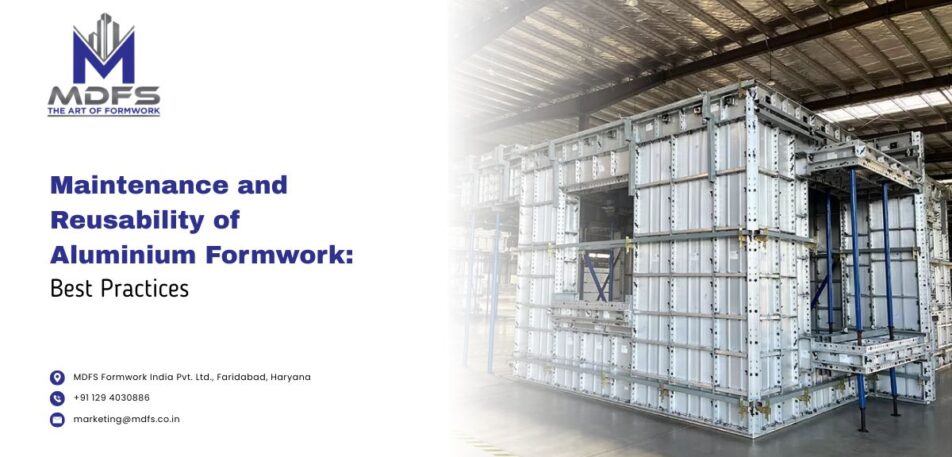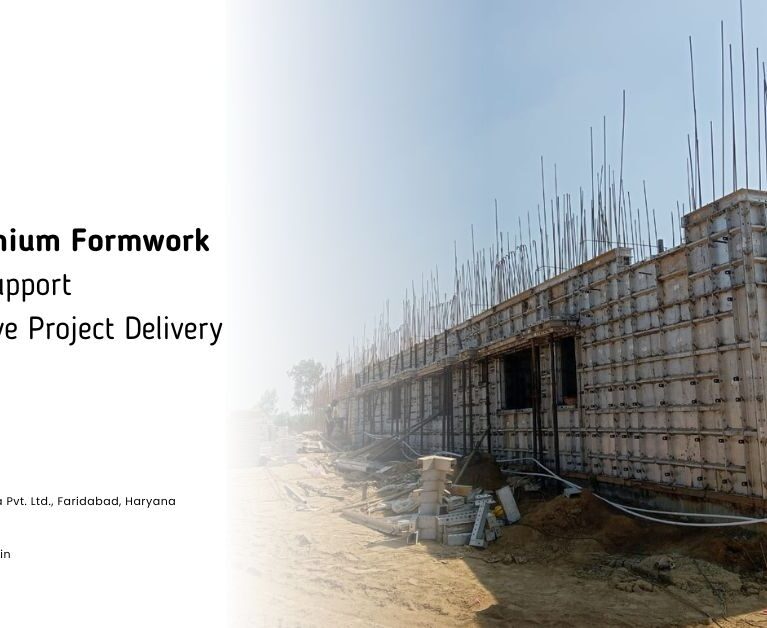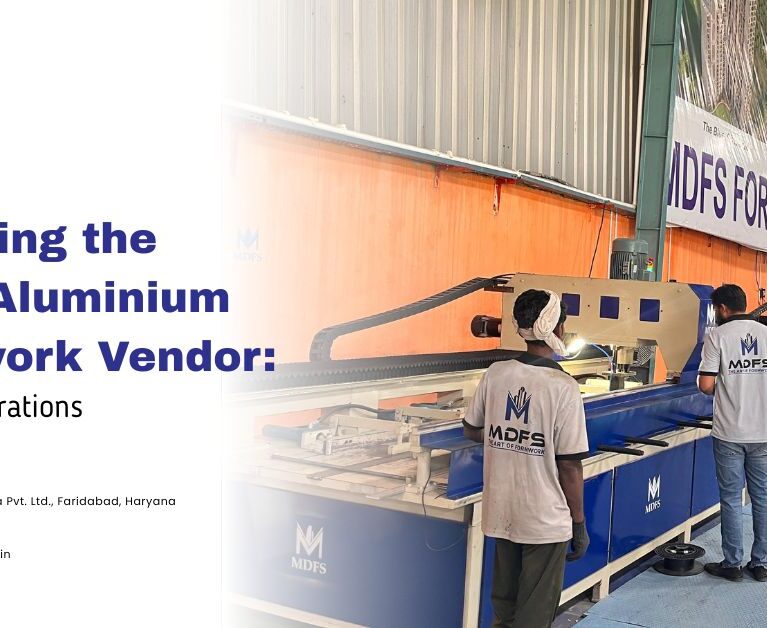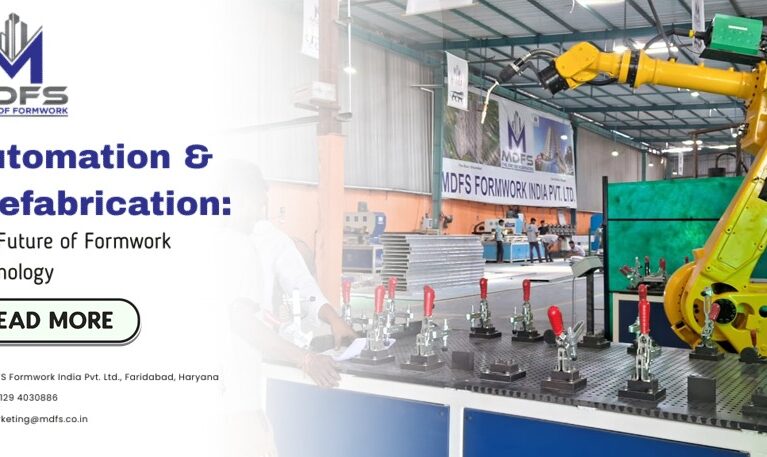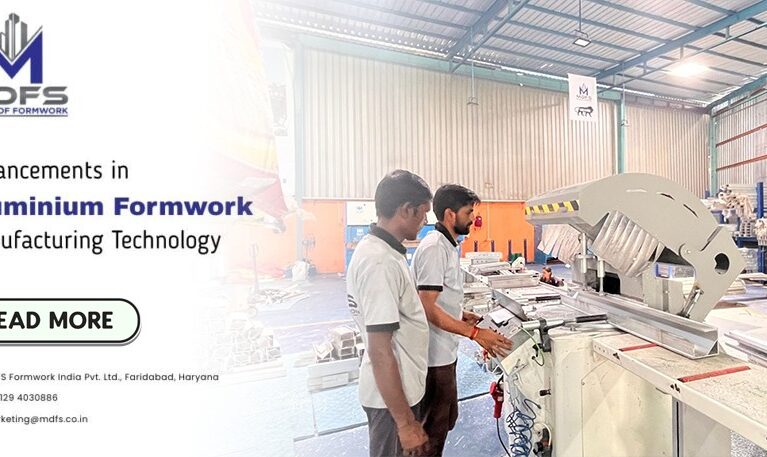Introduction
Aluminium formwork has become a game-changer in modern construction, particularly in large-scale residential and commercial projects. Its strength, lightweight nature, and ability to deliver smooth finishes make it a preferred choice over conventional formwork materials. However, the real value of aluminium formwork lies not just in its performance during the first project but in its reusability and longevity. Proper maintenance practices can ensure that aluminium formwork systems are used effectively for hundreds of repetitions, reducing costs and enhancing sustainability. For construction companies, collaborating with reliable aluminium formwork vendors ensures both quality supply and guidance on extending product life.
This blog explores best practices for maintaining and maximizing the reusability of aluminium formwork.
Why Maintenance and Reusability Matter
Aluminium formwork is often marketed as reusable up to 200–300 cycles under proper handling conditions. This reusability translates directly into cost savings and environmental benefits. Poor maintenance, however, can drastically reduce its life cycle, leading to higher capital expenditure and project delays. By following structured practices for handling, storage, cleaning, and repair, companies can protect their investment and ensure consistent performance across projects.
Best Practices for Maintenance of Aluminium Formwork
1. Proper Handling and Transportation
One of the most common causes of reduced formwork life is mishandling on-site.
- Use forklifts, cranes, or designated carriers to transport panels instead of dragging them.
- Avoid impacts, which may cause bending, dents, or joint misalignments.
- Ensure that workers handling panels are trained in aluminium formwork safety protocols.
Partnering with experienced aluminium formwork vendors often includes training sessions for site engineers and workers to minimize handling-related damage.
2. Regular Cleaning After Each Use
Concrete residues left on panels can harden and affect the smooth finish of future pours.
- Clean panels immediately after stripping using soft nylon brushes or water jets.
- Avoid using sharp tools that may scratch or damage the aluminium surface.
- Ensure all tie holes and joints are free of debris to maintain alignment during reuse.
Routine cleaning not only maintains panel integrity but also ensures faster installation in subsequent cycles.
3. Lubrication and Surface Protection
Applying form-release agents is critical in preventing concrete from sticking to panels.
- Use approved, non-staining release oils compatible with aluminium.
- Apply uniformly to ensure a consistent finish and prevent surface corrosion.
- Avoid over-application, which could compromise concrete quality.
Regular lubrication extends the service life of panels and enhances reusability across multiple projects.
4. Inspection and Repair Cycles
Before and after each use, panels should undergo inspection to detect issues early.
- Check for dents, bends, or damaged edges.
- Monitor locking mechanisms, pins, and wedges for wear and tear.
- Repair bent panels using specialized straightening equipment provided by formwork vendors.
- Replace irreparable components promptly to avoid compromising structural alignment.
Many aluminium formwork vendors provide post-sales maintenance and repair services, making it easier for construction companies to keep their systems in optimal condition.
5. Safe and Organized Storage
Storage plays a vital role in maintaining panel quality between projects.
- Store panels in covered areas to prevent exposure to rain, dust, and extreme temperatures.
- Stack panels neatly on wooden pallets to avoid ground contact and corrosion.
- Label and categorize components for easier retrieval and reduced mishandling.
Adopting standardized storage methods ensures long-term usability and prevents costly damages.
Enhancing Reusability for Long-Term Value
Standardization and Modular Planning
Adopting modular design principles during project planning allows panels to be reused efficiently across different sites. Standardized dimensions and layouts reduce the need for frequent modifications.
Skilled Workforce Training
Reusability heavily depends on how well site teams handle panels. Investing in regular training, often offered by aluminium formwork vendors, ensures reduced damage and maximized reuse cycles.
Tracking Usage Cycles
Maintain a log for each panel to monitor the number of uses, repairs conducted, and replacement schedules. Such tracking helps identify when panels need refurbishment or retirement, ensuring consistent quality in construction outputs.
Collaboration with Vendors
Working closely with aluminium formwork vendors ensures access to:
- Spare parts and repair kits
- Technical support for reconditioning panels
- Guidance on industry best practices for specific project requirements
This partnership not only guarantees product quality but also helps construction firms extract maximum value from their investments.
Sustainability Benefits of Reusable Aluminium Formwork
Maintenance and reusability practices also contribute significantly to sustainability. Unlike timber formwork, aluminium formwork minimizes wastage and deforestation. By extending the lifecycle of panels through best practices, companies reduce their carbon footprint, align with green building certifications, and demonstrate corporate responsibility.
Conclusion
The maintenance and reusability of aluminium formwork are critical for cost efficiency, sustainability, and consistent project delivery. By focusing on proper handling, regular cleaning, lubrication, timely repairs, and safe storage, construction firms can extend the usability of panels to hundreds of cycles. Moreover, collaborating with trusted aluminium formwork vendors provides the technical expertise, training, and support required to maximize ROI.
As the construction industry increasingly emphasizes speed, quality, and sustainability, adopting best practices in aluminium formwork maintenance is no longer optional—it is essential for staying competitive and future-ready.


